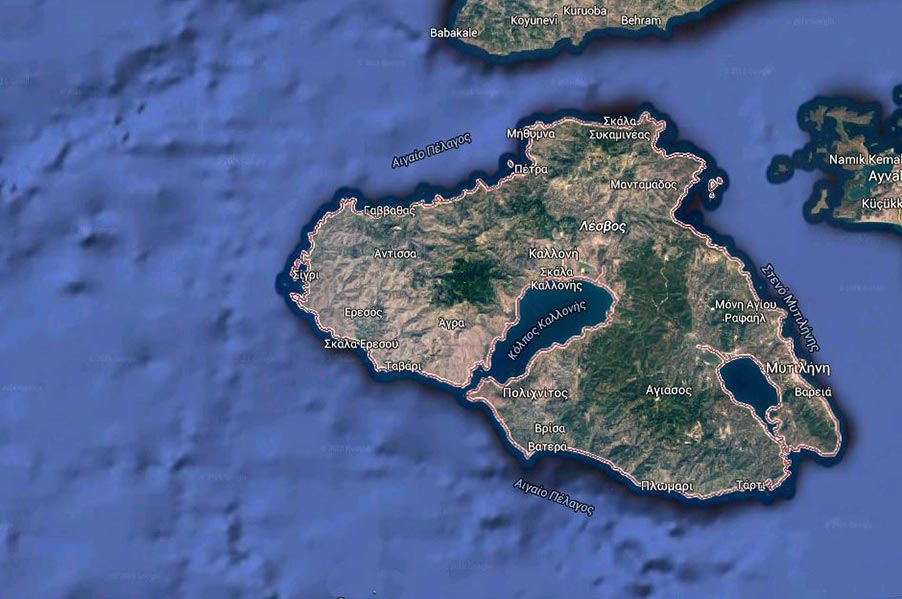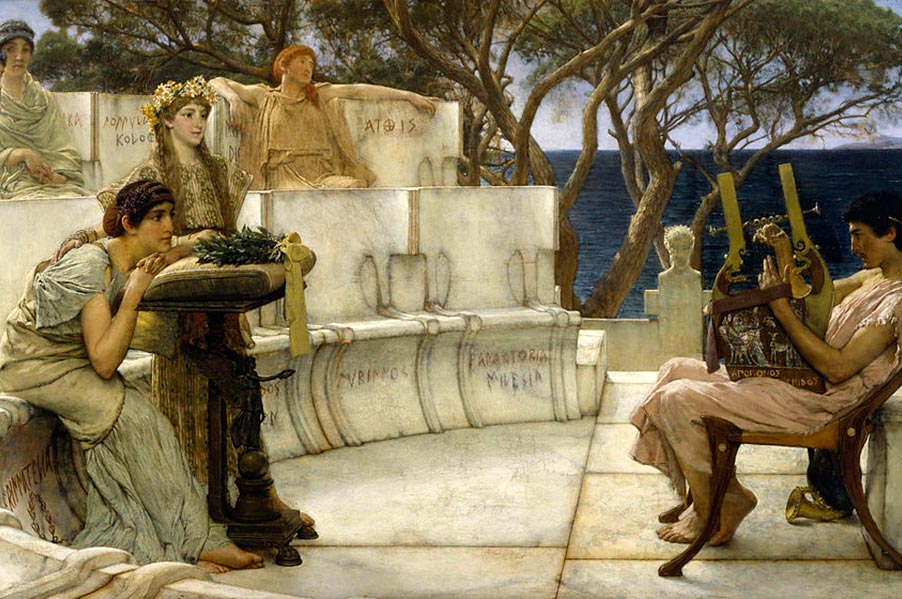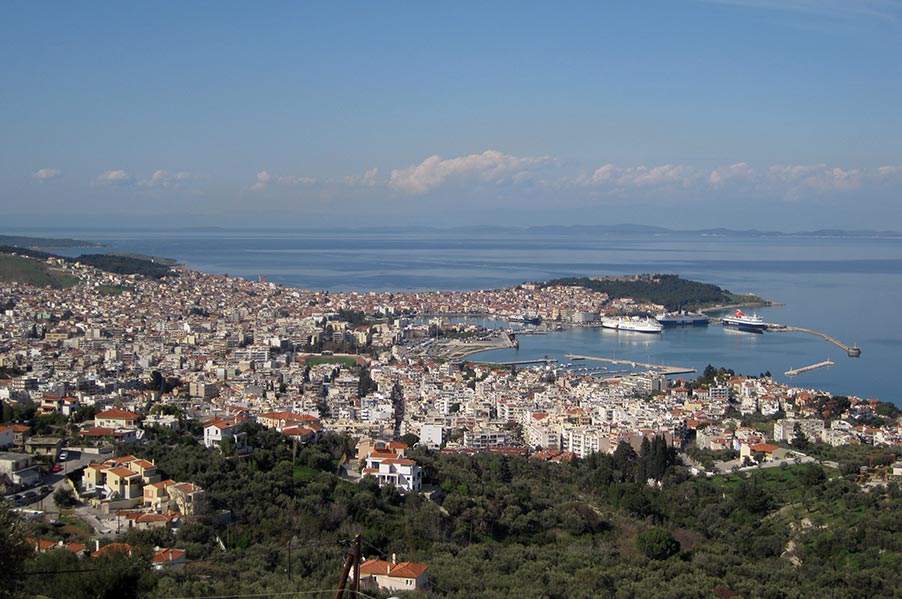- Home
- Lesvos
- Lesvos Entries
- Lesvos Island, North Aegean
Description
Lesvos, sometimes referred to as Mytilene after its capital, is a Greek island located in the northeastern Aegean Sea. It has an area of 1,632 square kilometres (630 sq mi) with 320 kilometres (199 miles) of coastline, making it the third largest island in Greece. It is separated from Turkey by the narrow Mytilene Strait and in late Palaeolithic/Mesolithic times was joined to the Anatolian mainland before the end of the last Ice Age.
Lesvos is a separate regional unit of the North Aegean region, and is one of five governing islands within it. The others are Chios, Ikaria, Lemnos, and Samos. The total number of islands governed by the North Aegean are nine: Lesvos, Chios, Psara, Oinousses, Ikaria, Fournoi Korseon, Lemnos, Agios Efstratios and Samos. The capital of the North Aegean Region is Mytilene. The population of Lesvos is approximately 86.000, a third of whom live in its capital, Mytilene, in the southeastern part of the island. The remaining population is distributed in small towns and villages. The largest are Plomari, Kalloni, the Gera Villages, Agiassos, Eresos, and Molyvos (the ancient Mythimna).
According to later Greek writers, Mytilene was founded in the 11th century BC by the family Penthilidae, who arrived from Thessaly, and ruled the city-state until a popular revolt (590–580 BC) led by Pittacus of Mytilene ended their rule. In fact the archaeological and linguistic record may indicate a late Iron Age arrival of Greek settlers although references in Late Bronze Age Hittite archives indicate a likely Greek presence then. The name Mytilene itself seems to be of Hittite origin. According to Homer's Iliad, however, Lesvos was part of the kingdom of Priam in what is now Turkey. Much work remains to be done to determine just what was happening and when. In the Middle Ages, it was under Byzantine and then Genoese rule. Lesvos was conquered by the Ottoman Empire in 1462. The Ottomans then ruled the island until the First Balkan War in 1912, when it became part of the Kingdom of Greece.
According to Classical Greek mythology, Lesvos was the patron god of the island. Macar was reputedly the first king whose many daughters bequeathed their names to some of the present larger towns. In Classical myth his sister, Canace, was killed to have him made king. The place names with female origins are likely to be much earlier settlements named after local goddesses, who were replaced by gods. Homer refers to the island as "Macaros edos", the seat of Macar. Hittite records from the Late Bronze Age name the island Lazpa and must have considered its population significant enough to allow the Hittites to "borrow their gods" (presumably idols) to cure their king when the local gods were not forthcoming. It is believed that emigrants from mainland Greece, mainly from Thessaly, entered the island in the Late Bronze Age and bequeathed it with the Aeolic dialect of the Greek language, whose written form survives in the poems of Sappho, amongst others.
During the Middle Ages it belonged to the Byzantine Empire. In 802, the Byzantine Empress Irene was exiled to Lesvos after her deposition, and died there. The island served as a gathering base for the fleet of the rebel Thomas the Slav in the early 820s.
In the 10th century, it was part of the theme of the Aegean Sea, while in the late 11th century it formed a dioikesis under a kourator in Mytilene. In the 1090s, the island was briefly occupied by the Turkish emir Tzachas, but he was unable to capture Methymna, which resisted throughout. In the 12th century, the island became a frequent target for plundering raids by the Republic of Venice.
After the Fourth Crusade (1202–1204) the island passed to the Latin Empire, but was reconquered by the Empire of Nicaea sometime after 1224. In 1354, it was granted as a fief to the Genoese Francesco I Gattilusio, whose family ruled Lesvos until it was conquered by the Ottoman Turks in 1462. It remained under Turkish rule, named Midilli in Turkish, until 1912 when it was taken by Greek forces during the First Balkan War.
The cities of Mytilene and Methymna have been bishoprics since the 5th century. By the early 10th century, Mytilene had been raised to the status of a metropolitan see. Methymna achieved the same by the 12th century.
Lesvos is the birthplace of several famous persons. In archaic times, Arion developed the type of poem called dithyramb, the progenitor of tragedy, and Terpander invented the seven note musical scale for the lyre. Two of the nine lyric poets in the Ancient Greek canon, Alcaeus and Sappho, were from Lesvos. Phanias wrote history. The seminal artistic creativity of those times brings to mind the myth of Orpheus to whom Apollo gave a lyre and the Muses taught to play and sing. When Orpheus incurred the wrath of the god Dionysus he was dismembered by the Maenads and of his body parts his head and his lyre found their way to Lesvos where they have "remained" ever since. Pittacus was one of the Seven Sages of Greece. In classical times Hellanicus advanced historiography, Theophrastus, the father of botany, succeeded Aristotle as the head of the Lyceum. Aristotle and Epicurus lived there for some time, and it is there that Aristotle began systematic zoological investigations. In later times lived Theophanes, the historian of Pompey's campaigns, Longus wrote the famous novel Daphnis and Chloe, and much later the historian Doukas wrote the history of the early Ottoman Turks. In modern times the poet Odysseus Elytis, descendant of an old family of Lesvos received the Nobel Prize.
The entire territory of Lesvos is "Lesvos Geopark" which is a member of the European Geoparks Network (2000-) and Global Geoparks Network (2004-) on account of its outstanding geological heritage, educational programs and projects, and promotion of geotourism.
This Geopark was enlarged from former "Lesvos Petrified Forest Geopark". Lesvos contains one of the few known petrified forests called Petrified Forest of Lesvos and it has been declared a Protected Natural Monument. Fossilised plants have been found in many localities on the western part of the island. The fossilised forest was formed during the Late Oligocene to Lower–Middle Miocene, by the intense volcanic activity in the area. Neogene volcanic rocks dominate the central and western part of the island, comprising andesites, dacites and rhyolites, ignimbrite, pyroclastics, tuffs, and volcanic ash. The products of the volcanic activity covered the vegetation of the area and the fossilization process took place during favourable conditions. The fossilized plants are silicified remnants of a sub-tropical forest that existed on the north-west part of the island 20–15 million years ago.
Source: www.wikipedia.org


